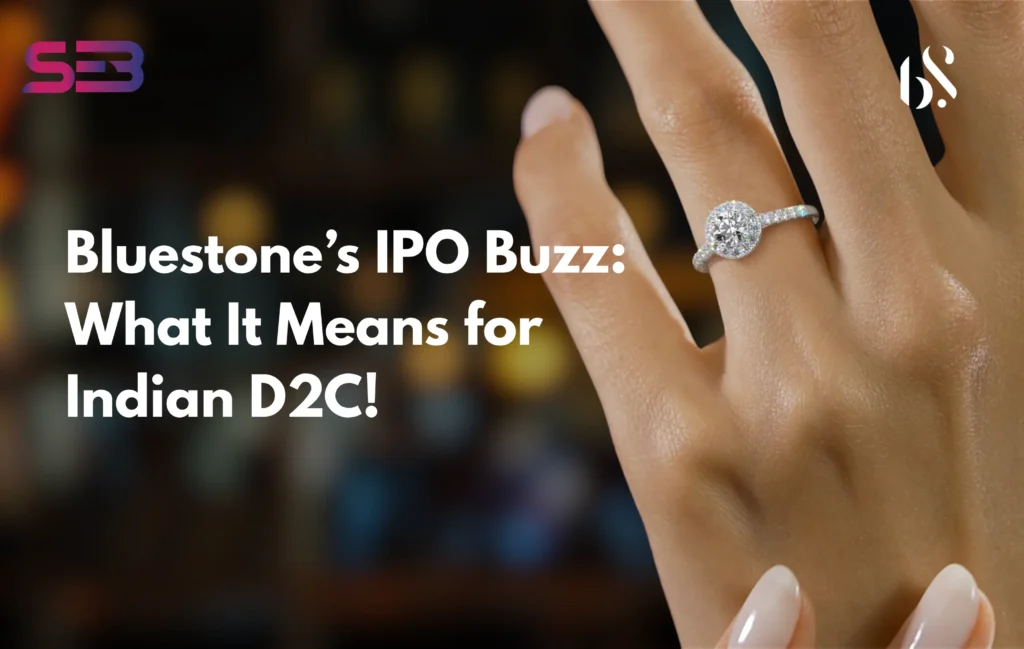Bluestone, an omnichannel jewellery business located in Bengaluru, is on the verge of becoming a unicorn, which is a significant milestone that might change the luxury jewellery market in India.
According to recent rumors, Prosus, a worldwide investor, has valued the business at over $950 million as it prepares for a highly anticipated initial public offering. Strong investor interest, enhanced financial results, and a tested hybrid model position Bluestone to rank among India’s most talked-about public offerings in 2025.
Here’s a detailed look at Bluestone’s history, the most recent fundraising news, and the implications of this move for the Indian startup scene.
From Startup Sparkle to Pre-Unicorn Shine
Gaurav Singh Kushwaha and Ganesh Krishnan founded Bluestone in 2011 with the goal of providing Indian customers with a smooth online shopping experience while offering exquisite, handcrafted jewelry. It changed course over time and adopted a hybrid omnichannel strategy, fusing its online presence with a quickly growing network of physical retail locations.
Bluestone has more than 200 locations in 86 cities as of the middle of 2025, and it intends to treble that number in the upcoming 12 to 18 months. The company has benefited from India’s changing retail patterns, where buyers want human engagement, touch-and-feel assurance, and trust before purchasing expensive jewelry. Only a well-integrated offline experience can provide these things.
Latest Funding Highlights: Pre-IPO Valuation at $950 Million+
A new round of secondary investment of ₹300–350 crore was obtained by Bluestone in a June 2025 update, with Prosus dominating the value at around ₹10,500 crore ($1.2 billion). Compared to its August 2024 primary round value of ₹8,100 crore ($970 million), this is a 30% premium.
In the most recent investment round, early supporters like RB Investments are completely selling their holdings, purportedly for 10x+ profits, rather than raising fresh money. Through private wealth platforms such as 360 One and Centrum Wealth, the shares are being made available to HNI and family office clients.
The market’s high level of trust in Bluestone’s trajectory and ability to become India’s next great consumer-tech success is demonstrated by the enthusiasm around the pre-IPO.

IPO Blueprint: DRHP Cleared, Listing Coming Soon
The Securities and Exchange Board of India (SEBI) received Bluestone’s Draft Red Herring Prospectus (DRHP) in December 2024, and it was approved in April 2025. The IPO will include:
- A main issuance of ₹1,000 crore, which will be used for working capital and expansion
- Existing investors’ Offer for Sale (OFS) of 2.4 crore equity shares.
Although the precise price and listing date have not yet been disclosed, sources speculate that it may be released onto the market as early as Q3 2025.
This IPO may also open the door for other Indian direct-to-consumer firms who are considering going public, especially those in high-end retail categories like lifestyle, fashion, and accessories.
Strong Financials: Revenue Growth & Loss Reduction
Investor interest has been further stoked by Bluestone’s steady improvement in financial performance. Let’s examine this more closely:
- Fiscal Year 2024: The net loss decreased to ₹142 crore from ₹167 crore, but revenue increased 64% year over year to ₹1,266 crore (compared to ₹771 crore in FY23).
- Revenue during the first quarter of FY25 was ₹348 crore, while the net loss was reduced to ₹59 crore.
- After the IPO, Bluestone is anticipated to turn a profit thanks to its excellent branding, omnichannel efficiency, and expanding retail presence.
These figures demonstrate the brand’s operational rigor, scalability, and capacity to draw in both mainstream and luxury customers.

Business Model: Where Tech Meets Tradition
Bluestone’s distinctive D2C business strategy, which skillfully combines digital and physical retail, is what makes it stand out. Both online and offline, its more than 8,000-page design collection is accessible. Consumers may plan home trials, examine collections online, and make appointments—an invention that became extremely popular after COVID.
Additionally, Bluestone uses a just-in-time production approach, which guarantees little inventory accumulation and enables it to react swiftly to customer demand. Because of this, it is capital-efficient, which is uncommon in the jewelry industry.
Another solid foundation is its AI-powered customization engine, which enables Bluestone to provide design recommendations based on browsing patterns, cultural inclinations, and life events like anniversaries or weddings. Traditional jewelers haven’t been able to match this feature on a large scale.
Investors Backing the Shine
Apart from Prosus, Bluestone’s cap table is a who’s who of top-tier VCs:
- Accel
- Kalaari Capital
- Iron Pillar
- Saama Capital
- RB Investments
- SVB
- Dragoneer
- Peak XV Partners (formerly Sequoia India)
- Steadview Capital
- Pratithi Investment Trust
Together, these investors have contributed approximately $255 million to Bluestone over the years, supporting the company’s growth over 12–16 rounds.
Continued financial confidence in Bluestone’s profitability plan is demonstrated by the involvement of BlackSoil and Caspian Impact Investments in May 2025 through ₹40 crore loan finance.
Market Context: Riding the Retail Boom
The growth of India’s direct-to-consumer sector and investors’ interest in consumer brands that are prepared for an IPO are the larger backdrop of Bluestone’s rise.
The retail jewelry industry was rocked by the Tata Group’s recent acquisition of CaratLane. Bluestone has established a profitable mid-premium market niche for itself by absorbing CaratLane and focusing on older demographics with Tanishq.
You have the recipe for success when you combine it with the growing desire from younger Indians for branded, verified jewelry.
What’s Next?
What to anticipate in the upcoming months is as follows:
- Launch timeframe and final IPO price (probably Q3 2025).
- As more HNI investors are onboarded by private wealth platforms, there are more secondary trades.
- Expansion to more than 400 locations, strengthening Bluestone’s physical footprint throughout India.
- Assuming 50% YoY growth, a potential revenue objective of ₹2,000+ crore by FY26.
In order to reach unexplored areas, Bluestone is also probably going to make significant investments in influencer collaborations, brand marketing, and growing its daily-wear and men’s collections.
Final Thoughts
Not merely a fundraising story, Bluestone’s transformation from a specialized online jewelry player to an omnichannel brand prepared for an IPO is evidence of what can be achieved in the Indian retail market when technology, design, and trust are combined.
As the business approaches unicorn status, it also represents a sea change in India’s developing startup scene, where secondaries, exits, and IPOs are now the rule rather than the exception.
With well-known brands supporting it and public marketplaces in the area, Bluestone is a company and brand worth keeping an eye on.




